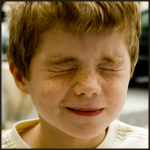
Learn how to use Duplo and Lego Blocks to get your child to learn his or her sight words. Also learn how to use them to help your child learn to form and sound out words. This is a lot of fun!
How to Make Cool Stuff

Today I will show you how to make a really cool Memory game that is great for any age child, but especially good for preschoolers and Kindergarteners who are still working on Alphabet Letters recognition. If you don’t have enough caps, you could also use coins, checkers, cardboard, or whatever else you have lying around the house.

Today we are going to how to play a fun Montessori game that promotes good hand writing skills while also helping kids to learn the alphabet on their own. This is an educational, yet fun arts and craft activity for both you and your young children to do together. This crafts idea is beneficial for preschoolers, kindergarteners, as well as children who are autistic / on the spectrum / or those who have sensory disorders. (even older children enjoy it).